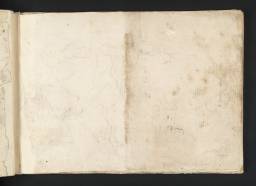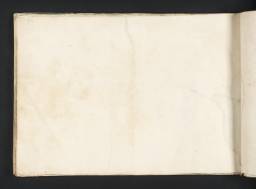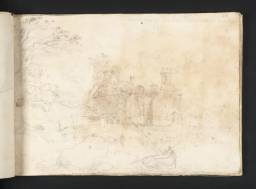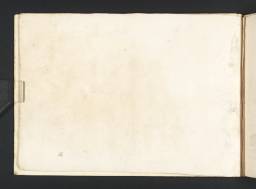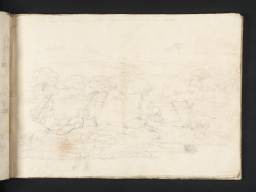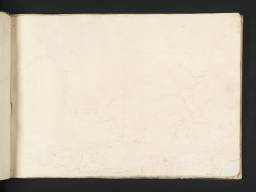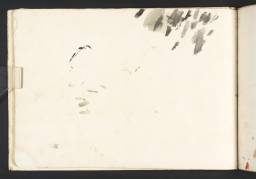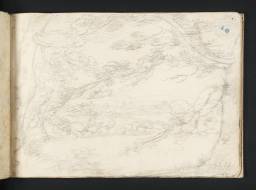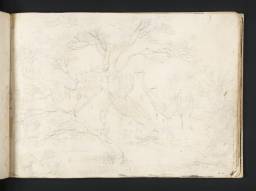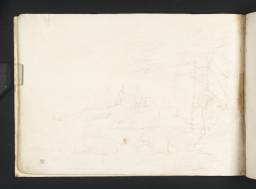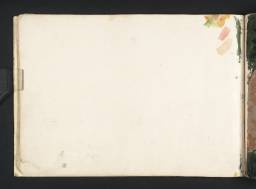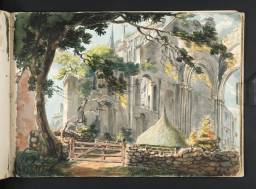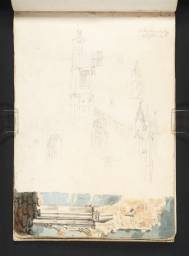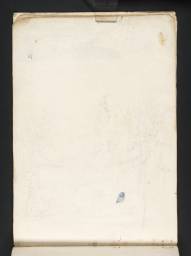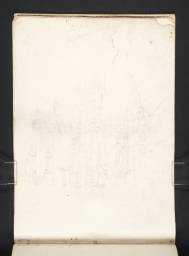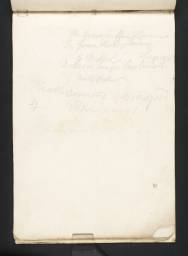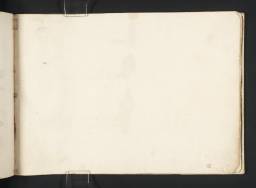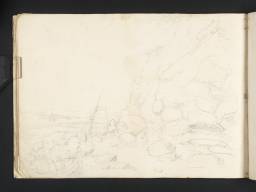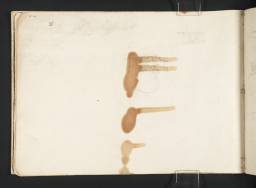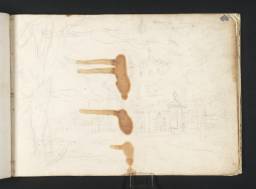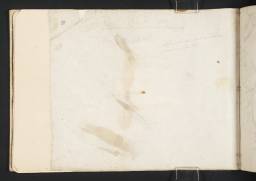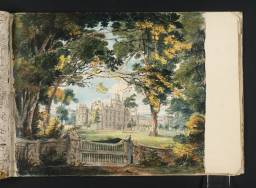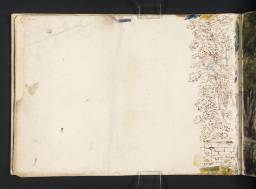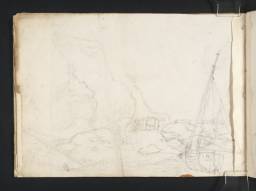Tate D00072–D00107, D40733–D40736
Turner Bequest VI 1–24
Sketchbook bound in marbled paper boards; according to Finberg, originally bound in cardboard covers
25 leaves of white laid and wove paper; watermark ‘J WHATMAN’; page size 185 x 263 mm
Front cover inscribed in black lead ‘S1’ towards top right and in blue pencil ‘S1’ above centre
Numbered 157 as part of the Turner Schedule, and endorsed by the Executors of the Turner Bequest, George Jones, Charles Lock Eastlake and John Prescott Knight on a half-sheet (not accessioned) stuck inside front cover, in ink ‘No 157 | Geo Jones’ and in pencil ‘C.L.E’., ‘JPK’; the half-sheet also inscribed by A.M. Hind: ‘Badly stained in the flood, January 1928 | rebound July 1933’, inscribed in pencil ‘VI’ top centre and stamped in black ‘VI’ top left; Finberg records Ruskin’s inscription on the wrapper: ‘157. The youngest book’
25 leaves of white laid and wove paper; watermark ‘J WHATMAN’; page size 185 x 263 mm
Front cover inscribed in black lead ‘S1’ towards top right and in blue pencil ‘S1’ above centre
Numbered 157 as part of the Turner Schedule, and endorsed by the Executors of the Turner Bequest, George Jones, Charles Lock Eastlake and John Prescott Knight on a half-sheet (not accessioned) stuck inside front cover, in ink ‘No 157 | Geo Jones’ and in pencil ‘C.L.E’., ‘JPK’; the half-sheet also inscribed by A.M. Hind: ‘Badly stained in the flood, January 1928 | rebound July 1933’, inscribed in pencil ‘VI’ top centre and stamped in black ‘VI’ top left; Finberg records Ruskin’s inscription on the wrapper: ‘157. The youngest book’
Accepted by the nation as part of the Turner Bequest 1856
References
This book, like the Oxford sketchbook (Tate; Turner Bequest II), seems to have been manufactured by Turner himself, although the original covers were destroyed, perhaps in the process of disbinding for display purposes in the nineteenth century or as a result of the 1928 flood; the damaged condition of many of the pages suggests that it had already disintegrated in Turner’s studio. The present covers, imitating those of the Oxford book, were made when the sketchbook was repaired at the British Museum, as noted by Hind. Turner took it with him when he went to stay with friends of his father’s, the family of John Narraway, a glue maker and fell monger (dealer in animal skins), in Bristol. As the book testifies, he spent so much time drawing along the cliffs of the Avon Gorge that he acquired the nickname ‘The Prince of the Rocks’.
Unlike the Oxford book, this is considerably more focused in its exercises: instead of ranging over a variety of subject types, Turner devotes himself almost exclusively to drawing composed ‘Views’ with the clear intention of putting them to an ulterior use. The sequence of subjects to which he allotted formal titles, carefully inscribed in copperplate, and sometimes worked up on separate sheets as more finished drawings (see folio 5 recto; D00076) suggest that he had it in mind to publish a set of plates showing ‘Twelve Views on the River Avon’ (see folio 20 verso; D00102). He perhaps intended to execute these plates himself as etchings; the etching instructions copied out on the verso of an academy study (Tate D40213; verso of Turner Bequest V D) may be corroborative evidence for this project. The enigmatic sketches of cartouches on folio 19 recto (D00099) and inside the back cover of the book (D40736) may then be interpreted as first thoughts for a wrapper design or title for the projected work.
Turner showed finished watercolour views at Clifton, Bristol and Malmesbury, developed from drawings made on this tour, at the Royal Academy in 1792. Another watercolour view of Malmesbury, in a private collection,1 seems to be a page taken out of this book.
Technical notes
How to cite
Andrew Wilton, ‘Bristol and Malmesbury sketchbook 1791’, sketchbook, April 2012, in David Blayney Brown (ed.), J.M.W. Turner: Sketchbooks, Drawings and Watercolours, Tate Research Publication, December 2012, https://www

